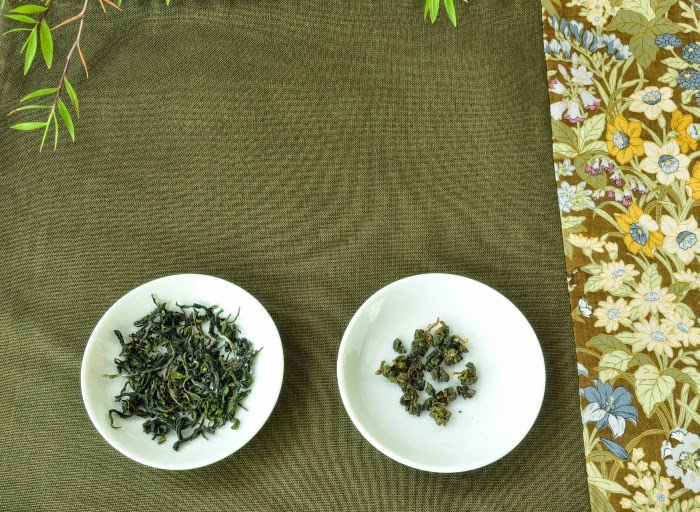 |
| San Hsia tea plantation in Mid March 2015 |
On the left is a tea menu from a breakfast place near State College, PA. It includes "Oolong" on the very last line, which probably means it's the least ordered tea there. They even provide a broad definition : "between a black and a green" to explain what an Oolong is, which again tells us that people are much less familiar with it than with spiced apple chai!
This definition is actually correct (where the english 'black' is the translation of Hong, red), but it's quite vague to describe a particular Oolong. Is it closer to black or green? Or, a more accurate way to ask would be: what is its degree of oxidation?
If it's lightly oxidized, is it OK to call it a "green Oolong", as I see it sometimes? No, this term is confusing, because it blurs the difference between a green tea and a lightly oxidized Oolong tea. Is there really such a big difference between a green tea and a lightly oxidized Oolong? The fastest way to learn is to experience this difference. The best way to do that is to taste 2 very similar teas:
 |
| Green tea vs lightly oxidized Oolong |
1. On the left: Jinxuan leaves from March 10, 2015 from San Hsia (Taiwan) processed as green tea (Bi Luo Chun).
2. On the right: Jinxuan leaves from December 28th, 2014 from Zhushan processed as Dong Pian, the least oxidized Oolong.
 |
| Green tea vs. lightlty oxidized Oolong |
Note: The Tea Mastes online Boutique is now giving away 25 gr of Spring 2014 Jinxuan Oolong from Zhushan for any order of 60 USD or more (not including transportation). It's still free airmail shipping above 100 USD and free EMS shipping above 200 USD.
 |
| Bi Luo Chun green tea from San Hsia, Taiwan |








1 comment:
Yes! A great comparison!
Post a Comment